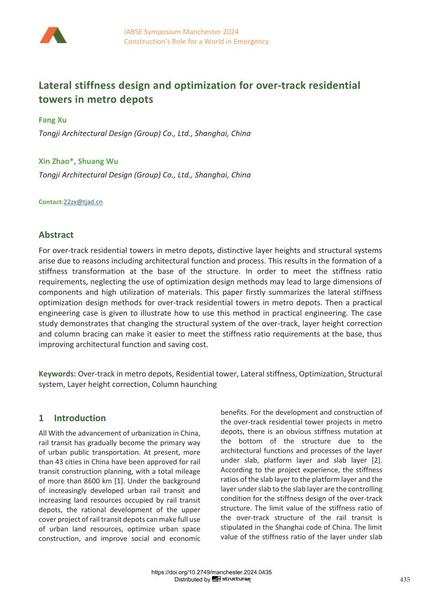Lateral stiffness design and optimization for over-track residential towers in metro depots

|
|
|||||||||||
Détails bibliographiques
| Auteur(s): |
Fang Xu
(Tongji Architectural Design (Group) Co., Ltd., Shanghai, China)
Xin Zhao (Tongji Architectural Design (Group) Co., Ltd., Shanghai, China) Shuang Wu (Tongji Architectural Design (Group) Co., Ltd., Shanghai, China) |
||||
|---|---|---|---|---|---|
| Médium: | papier de conférence | ||||
| Langue(s): | anglais | ||||
| Conférence: | IABSE Symposium: Construction’s Role for a World in Emergency, Manchester, United Kingdom, 10-14 April 2024 | ||||
| Publié dans: | IABSE Symposium Manchester 2024 | ||||
|
|||||
| Page(s): | 435-442 | ||||
| Nombre total de pages (du PDF): | 8 | ||||
| DOI: | 10.2749/manchester.2024.0435 | ||||
| Abstrait: |
For over-track residential towers in metro depots, distinctive layer heights and structural systems arise due to reasons including architectural function and process. This results in the formation of a stiffness transformation at the base of the structure. In order to meet the stiffness ratio requirements, neglecting the use of optimization design methods may lead to large dimensions of components and high utilization of materials. This paper firstly summarizes the lateral stiffness optimization design methods for over-track residential towers in metro depots. Then a practical engineering case is given to illustrate how to use this method in practical engineering. The case study demonstrates that changing the structural system of the over-track, layer height correction and column bracing can make it easier to meet the stiffness ratio requirements at the base, thus improving architectural function and saving cost. |
||||
